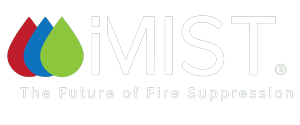Frequently Asked Questions
Typically, a 5 nozzle system could be fully installed in half a day.
Each nozzle covers 16m² or 172 sq. ft, so it would depend on how many rooms are in the property, as well as the size of the rooms. Please note that this is a rough guideline, and the number of nozzles required can be affected by things such as the height of your ceilings. Each design and quote is unique to your floorplan, so our team will be able to provide you with an accurate count, once you have submitted your floor plans to us.
The price for the iMist Fire Suppression system will depend on the number of nozzles and pumps required, as well as the amount of pipework required to complete the job. Once you have sent your floor plans/blueprints across to our sales team, they will be able to organise a quotation for the project.
The mess will be minimal, and all of our engineers are trained and instructed to clear up after they have installed the system.
The pump unit is designed to fit in kitchen units under the sink, in under stairs cupboards, the eaves of the building etc.
Our system is designed to be fitted behind a 30-minute fire resistant plasterboard barrier. If you cannot provide us with this, then we would install solid fixed stainless-steel pipework. This pipework is, however, very small compared to a typical fire sprinkler system.
No, that is a Hollywood myth. It will only be the nozzle where the fast response bulb breaks that will be activated in the unfortunate event of a fire.
- Fire protection refers to the steps taken to reduce the risk of fire, including the use of fire-resistant materials, proper installation of electrical systems, and regular maintenance of equipment. The goal of fire protection is to prevent fires from starting in the first place.
- Fire prevention involves measures taken to prevent fires from occurring, such as educating people about fire safety, enforcing fire codes, and conducting regular inspections of buildings and equipment. Fire prevention is focused on identifying potential fire hazards and taking steps to mitigate them before a fire can occur.
- Fire suppression refers to the actions taken to put out a fire once it has started. This can include using fire extinguishers, sprinkler systems, or calling the fire department. The goal of fire suppression is to quickly extinguish the fire and minimize damage to property and people.
The iMist system requires annual maintenance. We know our customers have busy lives so we keep a record in-house and will email you, and contact you by post, a few weeks before the service due date as a reminder.
